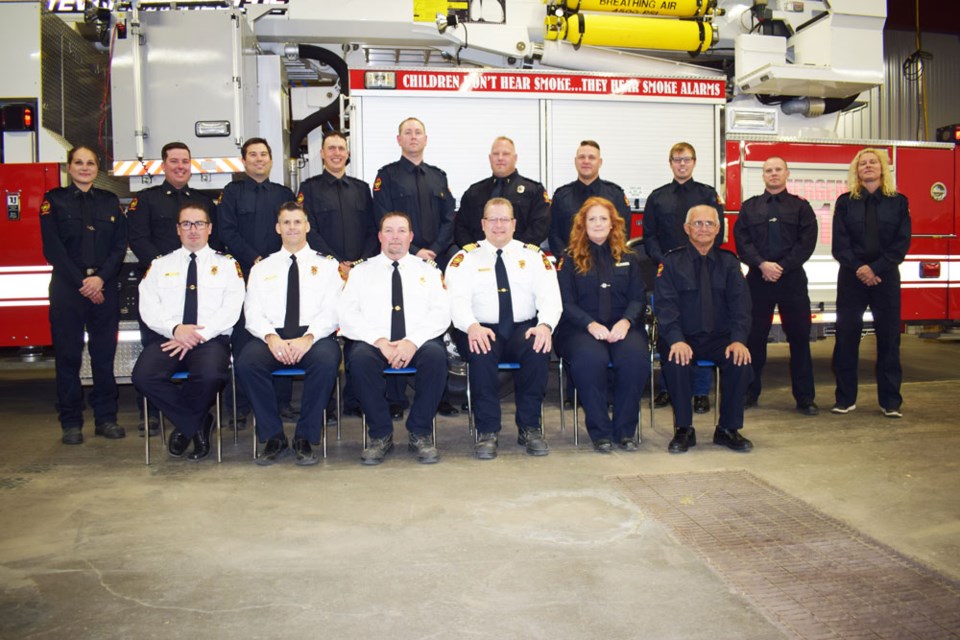ESTEVAN - The Estevan Fire Rescue Service (EFRS) is a part of joint effort aimed at minimizing and preventing the risks of developing cancer among firefighters.
Monday morning Estevan Fire Chief Dale Feser provided an update on the EFRS’s role in the provincial initiative.
"We're one of 15 fire departments throughout the province that approximately two years ago started to take a look at firefighter cancer in the workplace and preventive measures that we can put in place to lessen the degree and exposure of firefighters to these carcinogens," Feser said.
The Workers Compensation Board (WCB), Jim Burneka with Firefighters Cancer Consultants, the Saskatchewan Association of Fire Chiefs, the Saskatchewan Volunteer Firefighters Association and representatives of Regina, Prince Albert, Estevan and a few other fire departments released the results of their work in this area.
"There's a series of videos that were developed in order to hopefully educate fire departments and firefighters, not only in our province but across Canada and North America, to successfully put into place initiatives to prevent the amount of exposure to carcinogens that are known in the workplace,” said Feser.
“Some of them are decontamination of the firefighters, proper laundering of turnout gear, secondary turnout gear that's available for the firefighters so that way they can put that in service right away, right down to exhaust management systems from the diesel exhaust or total exhaust management systems to put in place for the apparatus floor, particular blocking hoods, anything that we could possibly do to try to lessen the exposure of firefighters and hopefully diminish the number of cancers that are being caused to firefighters within the province.”
The Estevan fire department shared the practices that they've already implemented to make it safer for local firefighters in those videos to help educate other departments.
"We are proud to say that we partook in a lot of these videos. We have been very forward and proactive in our preventive measures, as we do have a lot of these things that have been put into place into the new fire station here over the last couple of years," Feser said.
The EFRS shared their experience with proper gear extracting, which is a special clothes washer that is designed to extract all the carcinogens from the turnover gear, which they've had put into service for about two years. They also have an entire exhaust management system that the City of Estevan was on board with right away when it was pitched by the EFRS.
"It was a fairly costly endeavour. However, our most valuable resource and asset is the firefighters themselves, so we need to protect them," Feser said. "We can't thank the city council and the city manager enough to really have the foresight and believe in the vision that we're seeing now."
Estevan fire department also has a complete secondary turnout gear for all firefighters, as well as all of the particular blocking technologies.
"I think that the City of Estevan has done great steps and strides here to make sure that we're offering the highest level of protection to our staff," Feser said.
The videos sharing information about steps to protect firefighters are uploaded to WCB's worksafesask.ca and will spread throughout the province with the help from the Saskatchewan Association of Fire Chiefs, Saskatchewan Volunteer Firefighters Association and Professional Firefighters Association.
"We're trying to make it as available as possible. So that way, all the firefighters can educate themselves," Feser said.
He added that some of the recommended measures are very cost-prohibitive, especially for smaller fire departments, and they will be looking into accessing some provincial and federal funding to help make it work. But other measures such as wet and dry decontamination on-site assume some regular thorough cleaning procedures that should be implemented to minimize firefighters' exposure to carcinogens.







